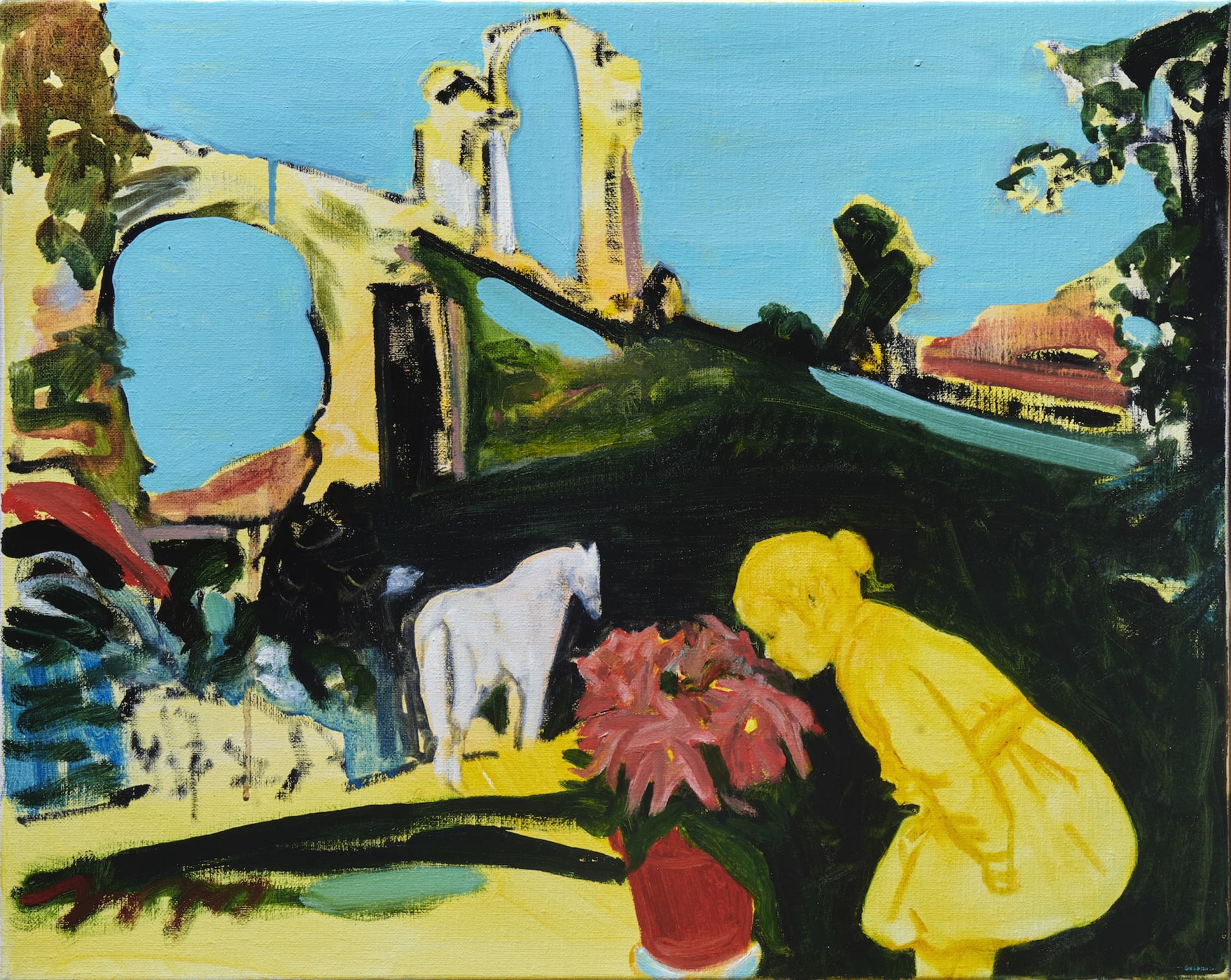Art: What Lies Beneath
Everything's coming up roses on Serena's canvas
NIALL MacMONAGLE

SERENA CAULFIELD: Orwell's Roses
A colour, a place or something you've read? A combination of all of the above" inspires Wexford-based artist Serena Caulfield.
She grew up in Boro Hill, near Enniscorthy, where her parents ran an equestrian centre. "It was pure freedom," she says. and keeping horses meant "a strong work ethic. We pulled our weight and that's definitely given me an extra edge and the capacity and determination to work as an artist".
She remembers being about two years old and looking at a very old artwork above the fireplace. It was a river scene, with animals and humans in boats.
"I thought it was humongous: how else could they fit all the animals in? But it was a tiny painting and this false childhood memory has led to much of the work I'm making today." Caulfield "loved drawing and painting", wanted to be an architect but "was terrible at maths so I gave up that notion". In primary school she got to paint along to Frank Clarke's Simply Painting on RTE. "l absolutely adored it and painting and drawing kept me sane following a bad accident off a horse at 16.
At Bridgetown college, her art teacher Mary Ryan was "influential and supportive" and though she was told "multiple times" to stop painting animals at the newly opened Gorey
School of Art, in her new show animals figure in every work.
At Gorey, "very much in its infancy, just 10 students in total" she had brilliant tutors, Mairead O'hEocha, Brian Hand, Anthony Lyttle, Paul Doran and Eamonn Carter, and though "it took me a while to get serious, then the penny dropped", Postgrad at NUA Norwich with more great tutors and a practice-based course meant: "I was elated".
Now Caulfield lives in an old house by the sea and she keeps hens, dogs and cats. During Covid she found a book detailing her great grandfather's collection, paintings no longer in the family. She researched these and intertwining this research with local mythologies, childhood photographs and memories and my immediate surroundings, I take different approaches when tackling a painting".
She begins with a yellow ground, a particular shade of Old Holland and limits her vibrant palette to eight colours. “In nature, most things yellow are dangerous or poisonous, but it's also the colour of sunshine and happiness." For Orwell's Roses, I first made a collage using a 1664 Adriaen van de Velde painting and a photograph of my sister smelling a poinsettia and used that as a source image.
The roses are clearly not roses, but the child doesn't know any different. The horse almost acts as narrator. The ruins in the background perhaps point to the fact that the only thing that endures is time." George Orwell, in Nineteen Eighty-Four, wrote: "If you want a picture of the future, imagine a boot stamping on a human face - for ever”. But we also know that Orwell planted roses in the garden of his rented house in Wallingham, Hertfordshire. in south-east England in the late 1930s.
Caulfield, "reappropriated" Rebecca Solnit's book title Orwell's Roses because Solnit's book "explores the relation between Orwell's love of the garden he planted and perhaps how we can find solutions and solace in what we leave for other people to enjoy, while navigating this world in all its complexities with the intertwined politics of nature and power".
Serena Caulfield s exhibition, 'Dream Baby Dream, is at Solomon Fine Art, Dublin, until February 3; www.serenacaulfield.com





